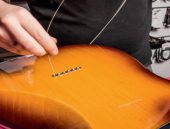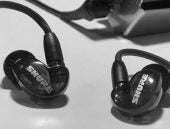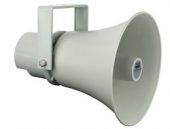-
The EQ, short for equaliser, is the most important tool in any mixing engineer’s kit (aside from the level fader, of course). If you’re new to DAWs or mixers, you might be wondering what an EQ even is and how it’s used. And what’s the difference between a parametric and a graphic equaliser? In this blog, I’ll explain everything and even include explanations of important terms like curve and low cut/high pass.
-
The drum kit as we know it today has undergone centuries of evolution. In all likelihood, it originates from the first instrument played by humans, as archeological evidence suggests that for thousands of years, people having been pounding and hammering on anything they could get their hands on.
-
For DJs, an organised music collection is vital to playing a flawless set. Adding structure by labelling files, folders and subfolders, finding the right tracks can be made much easier, and it can even help you add better transitions to your mixes. That means it’s time to bring order to the chaos! In this blog, I offer beginner DJs a handful of digital music managements tips.
No responses | in: DJ -
Have the strings of your electric guitar seen better days? Has the top string snapped or are they sounding a wee bit dead? Then it’s probably about time that you give your cherished instrument the love it deserves by gifting it with a fresh set of strings. Only … re-stringing a guitar for a beginner might be a little bit daunting.
-
Unfortunately, we don’t get to see them as much as we’d like, but that’s already changing fast. Thanks to pioneers like Karen Carpenter, Sheila E., Meg White, Helen Hallsworth, and YouTube stars like Meytal Cohen, more and more girls are picking up a set of sticks and pounding the skins. In this blog, we tell you about 5 of the best known and most interesting female drummers out there.
-
One of the things that makes the electric guitar so seductive is the insane range of different sounds you can get out of a single instrument. The electric guitar can be used to make something heart-breakingly subtle, just as easily as it can be deployed to unleash ear-splitting brutality. This blog deals with the latter – and we’re not talking about just cranking up the volume and hoping for the best, but the subtle art of guitar distortion in all its forms. That’s not to say you can’t crank it up. Back in the day, before the dawn of effects pedals, the only way to get a distorted sound was to push the volume of an amplifier so far that it started to crack. Thankfully, those times are gone and we can now enjoy the magic offered by distortion stompboxes, even at a more sociable volume.
-
If you want your axe to stay in tune during a serious dive-bomb, you’ll need a Floyd Rose tremolo with a special double-locking system. Since this system can look a little daunting to set up, we’re going to show you exactly how this type of guitar bridge works, and how you can string up and intonate it.
-
Guest-blogger Niels is here to tell you why in-ear monitoring (IEM) isn’t only great for gigs, but rehearsals! Together with the other six members of his band, Niels decided to get in-ear monitors for live performances, but they soon found out that there are also various benefits to using the system in their rehearsal space: much less noise and the ability to actually hear what you’re working on.
-
When you want to set up a small army of PA speakers in multiple rooms throughout a department store, shopping centre, restaurant, school or business, a 100-Volt system is a fitting solution. Since multiple speakers are connected to the same cable in parallel, it’s perfect for covering long distances combined with relatively low-powered speakers. As such, 100V systems are also used at sporting events, and in this blog, Bax Music product specialist, Bob is here to explain the basics and what to look out for when buying and setting up a 100V system.
No responses | in: Live Sound -
If, as a musician, you find yourself staring at sheet music like an illiterate puppy staring at an episode of Countdown, then you’re not alone! It can be endlessly frustrating if you’re more than able to play your instrument, but learning to play a new piece costs you weeks if not months of your precious life. Maybe you give up halfway through, maybe you just keep plodding on; in any case, you probably wish you were just better at reading music. Or maybe you’re good at it, but just want to speed the process up. All of this is possible!
-
You’re likely to have seen a musician perform, or at least heard of one who performs with feeling as they play or sing. This particular musical feeling or expression is not only created using tempo, rhythm, and a melody, but conveying expression in a piece also has a lot to do with dynamics. This blog has been written for beginners who want to understand what dynamics mean when it comes to music, how this is notated by symbols and terms in a manuscript, and how to interpret these signs and symbols.
-
No big bash, gig, or performance would be complete without some nice, big plumes of smoke to fully accentuate the lighting show or just add a dramatic touch of atmosphere. A good smoke machine is simply essential if you want to throw a memorable party. But how do you get the very best performance out of your smoke machine for as long as possible? Here, we offer 5 Golden Rules for operating and maintaining your smoke machine, so it can continue to belch out fog for as long as possible.
Sign up for the Bax Music Blog Update!
Just fill in your email address and we'll drop a fresh instalment of blogs in your mailbox every month so you never have to miss out again.
Subjects
About Bax Music
Bax Music is your go-to online music store in the UK with more than 48,000 bits of gear and accessories in stock. More than 1,000 brands and a 26,000m2 warehouse packed with musical instruments, DJ and studio gear, headphones, speakers and lighting. Ordered before 10 PM? Receive delivery in 2 - 4 business days.
Wanted: Guest Blogger!
Become a Video Reviewer!
Recent Posts
 NAMM 2025 – Top 10 Releases30 January 2025
NAMM 2025 – Top 10 Releases30 January 2025 Picking Out the Right PA System for a Wedding29 January 2025
Picking Out the Right PA System for a Wedding29 January 2025 The History and Features of Hard Rock and Heavy Metal29 January 2025
The History and Features of Hard Rock and Heavy Metal29 January 2025 How to Start a Band29 January 2025
How to Start a Band29 January 2025 How to Be a Wedding Singer28 January 2025
How to Be a Wedding Singer28 January 2025 Does a Good Musician Make a Good Band Mate?28 January 2025
Does a Good Musician Make a Good Band Mate?28 January 2025 Hybrid Drums: The Best of Both Worlds28 January 2025
Hybrid Drums: The Best of Both Worlds28 January 2025 How Do You Tune a Mixer, Speakers and Amplifier to Each Other?28 January 2025
How Do You Tune a Mixer, Speakers and Amplifier to Each Other?28 January 2025 Relic’ing a Guitar or Bass: How and Why23 January 2025
Relic’ing a Guitar or Bass: How and Why23 January 2025 A 5-Step Guide to Clean Recordings for Budding Mixing Engineers23 January 2025
A 5-Step Guide to Clean Recordings for Budding Mixing Engineers23 January 2025
Recent Comments
- Marnix | Bax Music on Special Chords: Rare but Useful
- Fungk on Headless Guitars: The Pros & Cons
- Johnny B. on Special Chords: Rare but Useful
- Black Beauty 16 on The Snare Buzzes When I Hit the Tom: Can I Fix it?
- Stefan | Bax Music on Phantom Power: This is What You Need to Know
- Marnix | Bax Music on How To Connect A Record Player To An Amplifier Or Pair Of Speakers
- Lily on How To Connect A Record Player To An Amplifier Or Pair Of Speakers












